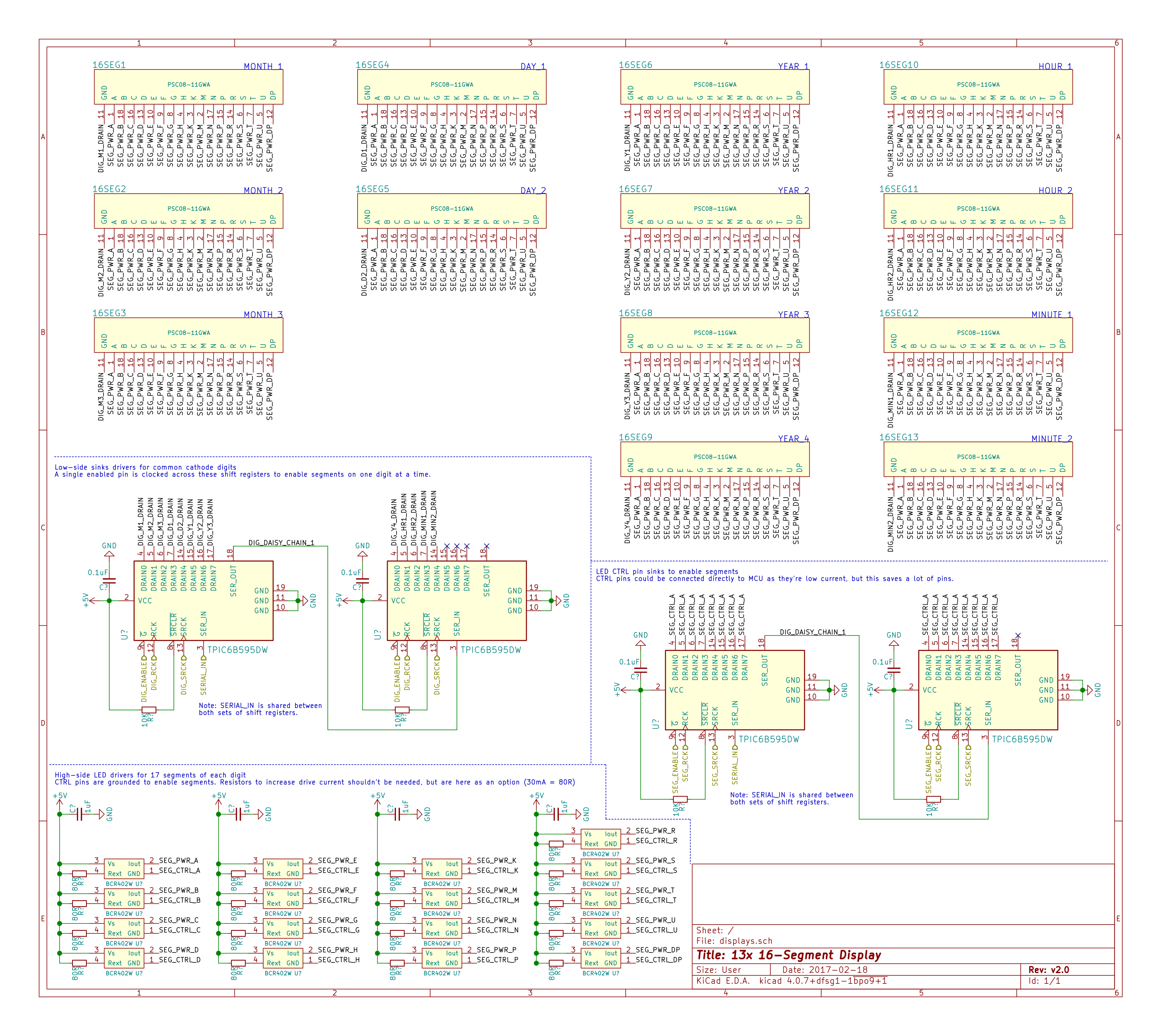After failing fairly fundamentally in my first attempt to drive 16-segment displays with 7-segment drivers, I've gone back to the drawing board.
Monolithic 16 or 14 segment drivers?
The MAX7291/MAX7221 7-segment drivers *can* be used to drive 14 or 16 segment displays (per this application note), but it's a bit of a hack. To pull it off I'd need 8x MAX7221 for this application (4 digits per pair of ICs), and would still need to dedicate processor time to constantly alternating shutdown of each pair of drivers. Not really ideal or practical.
Dedicated ICs for driving 14 or 16 segment common-cathode displays seem pretty rare as far as I can tell. Maybe there's a lack of demand for them these days, considering there's many other smaller, cheaper and better display technologies available. Maxim have their MAX6954 16-segment driver, but at $30 NZD a pop at the time of writing and requiring two of them for this application, they're too expensive.
There are plenty of monolithic, multi-channel LED driver chips available, though these are mostly (if not all) designed as current sinks rather than high-side drivers: they'll only work with common-anode displays. The 16-segment displays I have are common-cathode, so as convenient as these drivers would be, they're not an option for this project.
I would say "do more research before getting excited and buying parts", but I'm actually glad I picked up the 16-segment digits when I did. The Kingbright PSC08-11GWAs were just under a buck each (NZD) at the end of 2016, and they're now almost $4 each. As with dedicated segment driver ICs, there just doesn't appear to be a demand for 16-segment displays like these. To be fair, I've only once noticed a 16-segment display in the wild in all of the last year, and it was in an elevator in Montreal. Not sure how old the building was.
Keeping things discrete
With a reasonably priced monolithic solution unavailable (and committed to using common-cathode displays), I'm going to take a shot at building a custom driver circuit with discrete components.
At the moment I'm eying up:
- 20x BCR402W constant current, high-side LED drivers (16 segments, 1 decimal point, time separator and AM/PM indicators).
- 4x TPIC6B595 power shift registers to control current sinking and enabling 16 of the BCR402W drivers.
The low-volume cost of buying these components is around $15 NZD.
Two of the TPIC6B595s would be daisy-chained for clocking through the 13 ground pins of the digits. The other two TPICs would be daisy-chained to control segment illumination:

Using these power shift registers to sink the BCR402W ground (control) pins is complete overkill due to their tiny current requirement, but this setup frees up 12 MCU pins over controlling the segments directly from the MCU, and it's not introducing extra components. Alternatives are:
- use a MCU with more pins and control the LED drivers directly; or
- use a simpler LED driver (eg. NSI45020AT1G) + shift register(s) + 16 MOSFETs or BJTs + support passives; or
- use an I/O expander to free up pins on the MCU. This looks like an interesting solution, though I'd prefer not to using SPI or I2C for this (seems like it would be introducing unnecessary complexity).
What would you do?
 Stephen Holdaway
Stephen Holdaway
Discussions
Become a Hackaday.io Member
Create an account to leave a comment. Already have an account? Log In.
I found this trying to solve it myself.
Best I have been able to figure out so far is to charleiplex discrete LEDs, ATTINY214 seems like it can drive 20 of them no problem.
Are you sure? yes | no